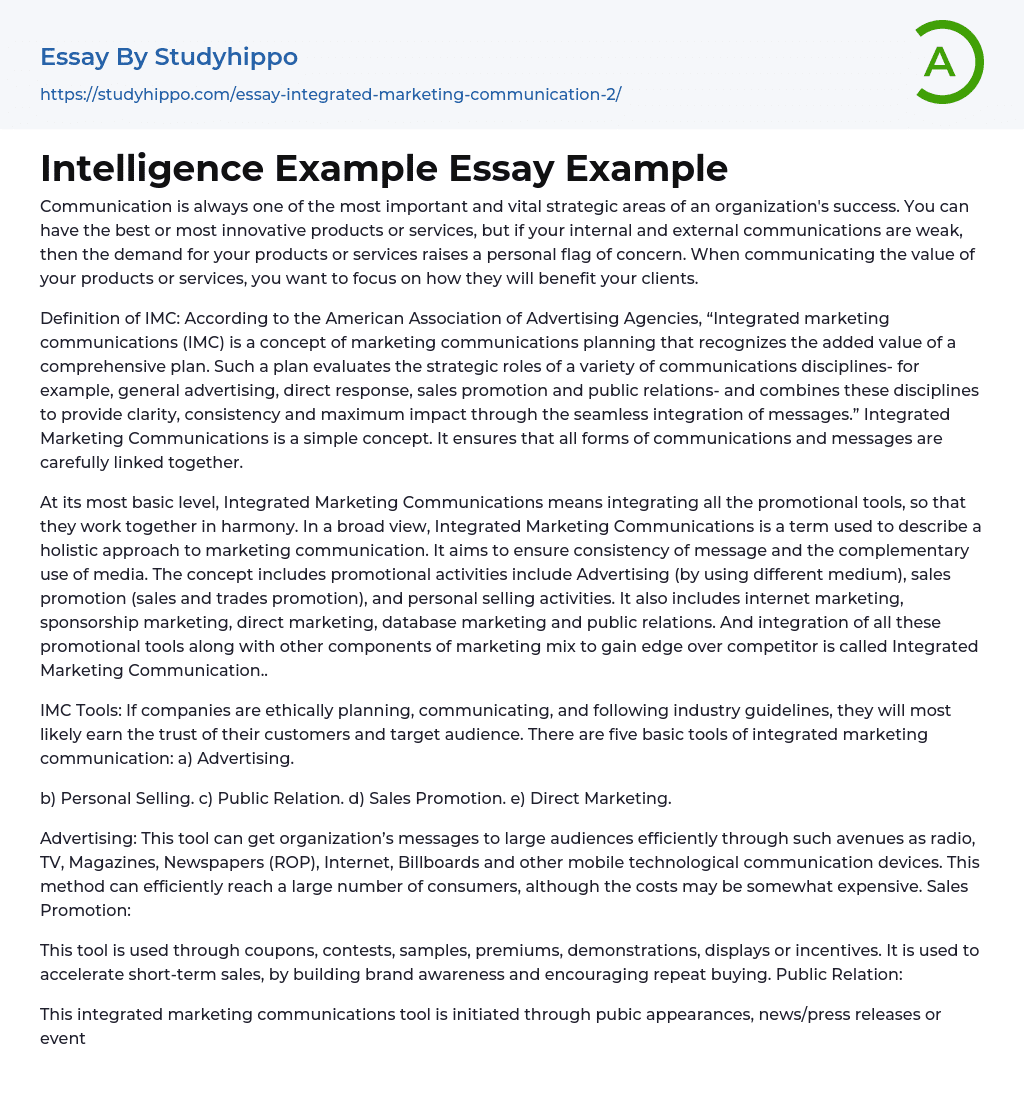Effective communication is crucial to the triumph of any organization. Even with top-notch or ground-breaking products or services, without robust internal and external communication channels, potential concerns about demand could arise. Emphasizing the advantages your products or services will provide to your customers is key in communicating their value.
The American Association of Advertising Agencies provides a definition for IMC, also known as Integrated marketing communications, as a marketing communication approach that accentuates the significance of an all-inclusive plan. This detailed plan evaluates the strategic parts of various branches of communication- such as broad advertising, direct interaction, sales boosting, and public relations. They are integrated maximally for a unified, consistent, and impactful communication through flawless message blending. In essence, Integrated Marketing Communications embodies a simplistic concept, which guarantees that all modes of communication and messages are meticulously intertwined.
<
...p>
Integrated Marketing Communications, at its simplest, signifies the harmonious alignment of all promotional tools. From a broader perspective, it's a comprehensive approach to marketing communication that aims to maintain a uniform message and utilize media in a complementary way. This concept encompasses promotional endeavors such as Advertising (through various channels), sales promotion (including sales and trades promotion), and personal selling activities. It also involves internet marketing, sponsorship marketing, direct marketing, database marketing, and public relations. The amalgamation of all these promotional tools along with other elements of the marketing mix to achieve a competitive edge is known as Integrated Marketing Communication.
IMC Instruments: Companies that plan, communicate, and adhere to industry standards ethically are more likely to gain the confidence of their clientele and intended market. The five fundamental instruments of Integrated Marketing Communication are: a) Advertisement.
b) One-on-One Selling
c) Reputation Management. d) Promotional Sales. e) Direct Outreach Marketing.
Advertisement: This facility can efficiently disseminate an organization's messages to large audiences using various channels such as radio, TV, magazines, newspapers (ROP), internet, billboards, and other mobile technology communication devices. It's a great way to reach many customers, however, the cost can be somewhat high. Sales Promotion: This instrument is implemented via coupons, competitions, samples, bonuses, demonstrations, displays or incentives. Its purpose is to boost short-term sales by enhancing brand recognition and promoting repeat purchases. Public Relations: This integrated marketing communications instrument is activated through public appearances, news/press releases or event sponsorships. It aims to build trust and goodwill by showcasing the company, product or individual in a positive manner. Direct Marketing: This tool employs email, mail, and catalogs, encourages direct radio and TV responses in order to engage targeted audiences to increase sales and test new products and alternative marketing strategies. Personal Sales: This IMC tool initiates through one-on-one negotiations such as arranging sales appointments and meetings, home parties, making presentations to reach your clients and strengthen the organization's relationship with them. IMC Tools with the Example of GP 3G handset A practical example of Integrated marketing communication can be illustrated using the example of GP handset. Suppose Grameenphone wants to market their own manufactured handset, let's say, model-GP3G1.Therefore, they have begun promoting their product to attract prospective customers using mediums like electronic media, posters, billboards, etc., before its official launch. One significant benefit of such advertising is that it encourages customers to buy the product. Furthermore, it ensures that the customers planning to make a purchase will hold off until the new product is
launched.
The product is currently at its initial introduction stage, where advertising plays a significant role in conveying and enlightening customers about its features. This also corresponds to the customer's pre-purchase phase within their buying decision process. In this step, after recognizing their need, they gather information and then determine which brand to buy.
Following its commercial launch, the company leverages all available marketing strategies to boost its profits. Although advertising was the focus in the earlier phase, at this point, all integrated marketing communication (IMC) elements -- including advertising, personal selling, sales promotion, direct marketing, and public relations -- are jointly and interconnectively utilized to ensure the product's maturity stage or to optimize profit. In contrast to the introductory advertisements that were used in the previous stage to familiarize customers with the product, at this juncture, the business turns to psychological advertising aimed at capturing a larger customer base.
Grameenphone intends to utilize a variety of tactics to market its product, including utilizing DSR (Distributor Sales Representative), marketing executives, authorized sales representatives, and telesales for direct marketing. Sales promotions will include package offers (handsets with rims) and discounts for lost rims. Their public relations strategy involves maintaining relationships with stakeholders, media partners, and intermediaries. Revenue will be generated both from the post-purchase actions of consumers and from information gathered during pre-purchase customer research. However, sales promotions have proven most effective in this context, leading to a decrease in funding for the remaining four IMC tools.




